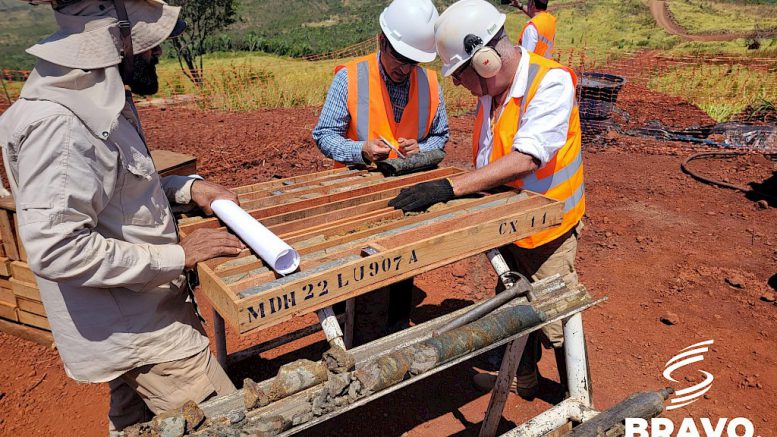Bravo Mining (TSXV: BRVO; OTCQX: BRVMF) is confirming the potential of its Luanga platinum group metals project in northern Brazil by re-sampling old drill cores collected by former owner Vale (NYSE: VALE).
Highlights of the re-sampling at the site about 500 km south of Belém on the country’s north coast include 30 metres starting at surface grading 2.34 grams platinum group metals (PGM) and gold per tonne; and 24 metres starting at 44 metres downhole grading 2.08 PGM and gold per tonne and 0.21% nickel, Bravo said in a news release on Tuesday.
The re-sampled intercepts are showing a trend of higher grades than Vale’s original drilling when it explored the area in the 1990s and early 2000s, Bravo chairman and chief executive officer Luis Azevedo said in the release.
“It is also encouraging that nickel sulphide grades are very comparable to the historical total nickel results, suggesting that very little nickel is tied up in silicates in the fresh rock,” Azevedo said. “All these observations, combined with the first-time assaying for rhodium in many intercepts, are supportive.”
The new analysis is being used to validate Luanga’s historical resource estimate and issue Bravo’s own figures next year. Vale’s estimate of 142 million tonnes grading 1.24 grams per tonne palladium, platinum and gold and 0.11% nickel dates from around 2007, according to Bravo. It has cautioned the old estimate is not compliant with NI 43-101 standards.
Bravo is using new drilling and analysis to determine the size of the Luanga deposit as it considers how it may fit into the surging critical minerals industry estimated to be worth trillions of dollars in the decades ahead fighting climate change. Palladium, platinum and rhodium are used in clean emissions technologies while nickel is a prime component of electric vehicle batteries.
Luanga’s new higher grades found in the old samples are likely a function of better modern assay techniques and assays showing rhodium, Dalton Baretto, a mining analyst with Canaccord Genuity Capital Markets, said in a note on Tuesday.
“We believe the ongoing validation of the presence of anomalous rhodium will be meaningful to the ultimate economics,” Baretto said. “Nickel sulphide grades (are) in line with historic overall nickel grades, indicating that the lion’s share of the contained nickel is sulphide mineralization.”
Bravo has received assays from 42 of the 252 drill holes Vale completed, Azevedo said. The explorer has sent 3,353 samples from historic cores for analysis. It also has six drill rigs on site with 20,409 metres or about 80% of a 25,500-metre in-fill and step-out drill program completed. A later 21,500-metre drill program is to focus on resource expansion.
The company said in October it is following up on a nickel-copper massive sulphidation first intercepted in hole 47, which graded 2.03% nickel and 1.23% copper over 11 metres.
The Luanga PGM gold and nickel deposit is about 7 km by 3.5 km, dates from 2.5 billion to 2.8 billion years ago and lies in a layered mafic and ultramafic complex. It’s considered generally similar in age and geology to major PGM deposits and mines, the company says.
Baretto has a buy rating and a $2.15 price target on the stock. It was little changed on Wednesday at $1.65, within a 52-week range of $1.53 and $1.95, valuing the company at $166.7 million.


Be the first to comment on "Bravo’s Brazilian PGM project finds higher grades than Vale years ago "